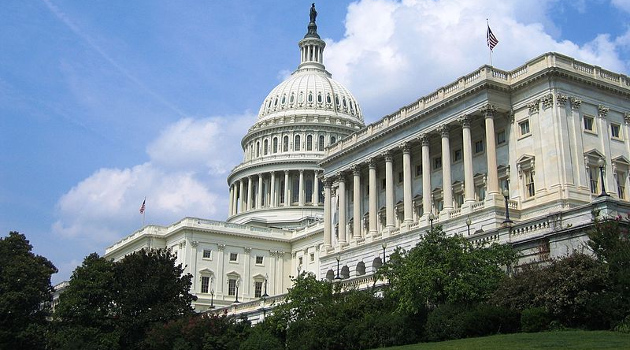Because of changing demographics and poorly designed entitlement programs, the burden of government spending in the United States (in the absence of genuine reform) is going to increase dramatically over the next few decades.
 That bad outlook will get even worse thanks to all the coronavirus-related spending from Washington.
That bad outlook will get even worse thanks to all the coronavirus-related spending from Washington.
This is bad news for America since more of the economy’s output will be consumed by government, leaving fewer resources for the private sector. And that problem would exist even if all the spending was magically offset by trillions of dollars of unexpected tax revenue.
Many people, however, think the nation’s future fiscal problem is that politicians will borrow to finance that new spending. I think that’s a mistaken view, since it focuses on a symptom (red ink) rather than the underlying disease (excessive spending).
But regardless of one’s views on that issue, fiscal policy is on an unsustainable path. And that means there will soon be a fight between twho different ways of addressing the nation’s grim fiscal outlook.
- Restrain the growth of government spending.
- Divert more money from taxpayers to the IRS.
Fortunately, we now have some new evidence to help guide policy.
A new study from the Mercatus Center, authored by Veronique de Rugy and Jack Salmon, examines what actually happens when politicians try to control debt with spending restraint or tax increases.
Here’s what the authors wanted to investigate.
Fiscal consolidation can take two forms: (1) adopting a debt-reduction package driven primarily by tax increases or (2) adopting a package
mostly consisting of spending restraint. …What policymakers might not know is which of these two forms of consolidation tend to be more effective at reining in debt levels and which are less harmful to economic performance: tax-based (TB) fiscal consolidation or expenditure-based (EB) fiscal consolidation.
Here’s their methodology.
Our analysis focuses on large fiscal consolidations, or consolidations in which the fiscal deficit as a share of GDP improves by at least 1.5 percentage points over two years and does not decrease in either of those two years. …A successful consolidation is defined as one in which the debt-to-GDP ratio declines by at least 5 percentage points three years after the adjustment takes places or by at least 3 percentage points two years after the adjustment. …Episodes in which the consolidation is at least 60 percent revenue increases are labeled TB, and episodes in which the consolidation is at least 60 percent spending decreases are labeled EB.
And here are their results.
…of the 45 EB episodes, more than half were successful, while of the 67 TB episodes, less than 4 in 10 were successful. …The results in table 2 show that while in unsuccessful adjustments most (74 percent) of the changes are on the revenue side, in successful adjustments most (60 percent) of the changes are on the expenditure side. In successful adjustments, for every 1.00 percent of GDP increase in revenues, expenditures are cut by 1.50 percent. By contrast, in unsuccessful adjustments, for every 1.00 percent of GDP increase in revenues, expenditures are cut by less than 0.35 percent. From these findings we conclude that successful fiscal adjustments are those that involve significant spending reductions with only modest increases in taxation. Unsuccessful fiscal adjustments, however, typically involve significant increases in taxation and very modest spending reductions.
Table 2 summarizes the findings.
As you can see, tax increases are the least effective way of dealing with the problem. Which makes sense when you realize that the nation’s fiscal problem is too much spending, not inadequate revenue.
In my not-so-humble opinion, I think the table I prepared back in 2014 is even more compelling.
Based on IMF data, it shows nations that imposed mutli-year spending restraint  and how that fiscally prudent policy generated very good results – both in terms of reducing the spending burden and lowering red ink.
and how that fiscally prudent policy generated very good results – both in terms of reducing the spending burden and lowering red ink.
When I do debates at conferences with my left-wing friends, I almost always ask them to show me a similar table of countries that achieved good results with tax increases.
Needless to say, none of them have ever even attempted to prepare such a list.
That’s because nations that repeatedly raise taxes – as we’ve seen in Europe – wind up with more spending and more debt.
In other words, politicians pull a bait-and-switch. They claim more revenue is needed to reduce debt, but they use any additional money to buy votes.
Which is why advocates of good fiscal policy should adamantly oppose any and all tax increases.
Let’s close by looking at two more charts from the Mercatus study.
Here’s a look at how Irish politicians have mostly chose to restrain spending.
And here’s a look at how Greek politicians have mostly opted for tax increases.
It goes without saying (but I’ll say it anyhow) that the Greek approach has been very unsuccessful.
———
Image credit: Martin Jacobsen | CC BY-SA 3.0.




